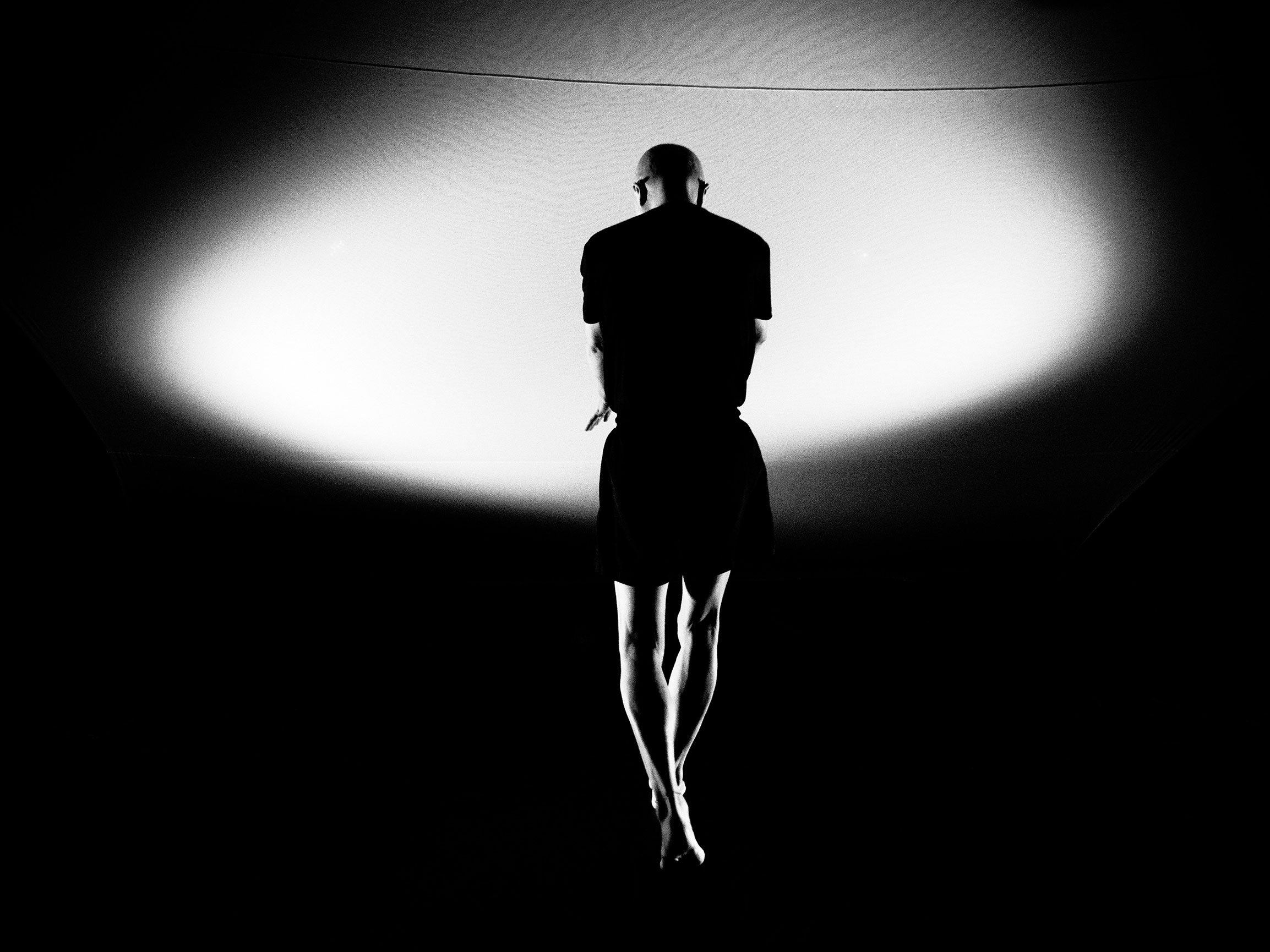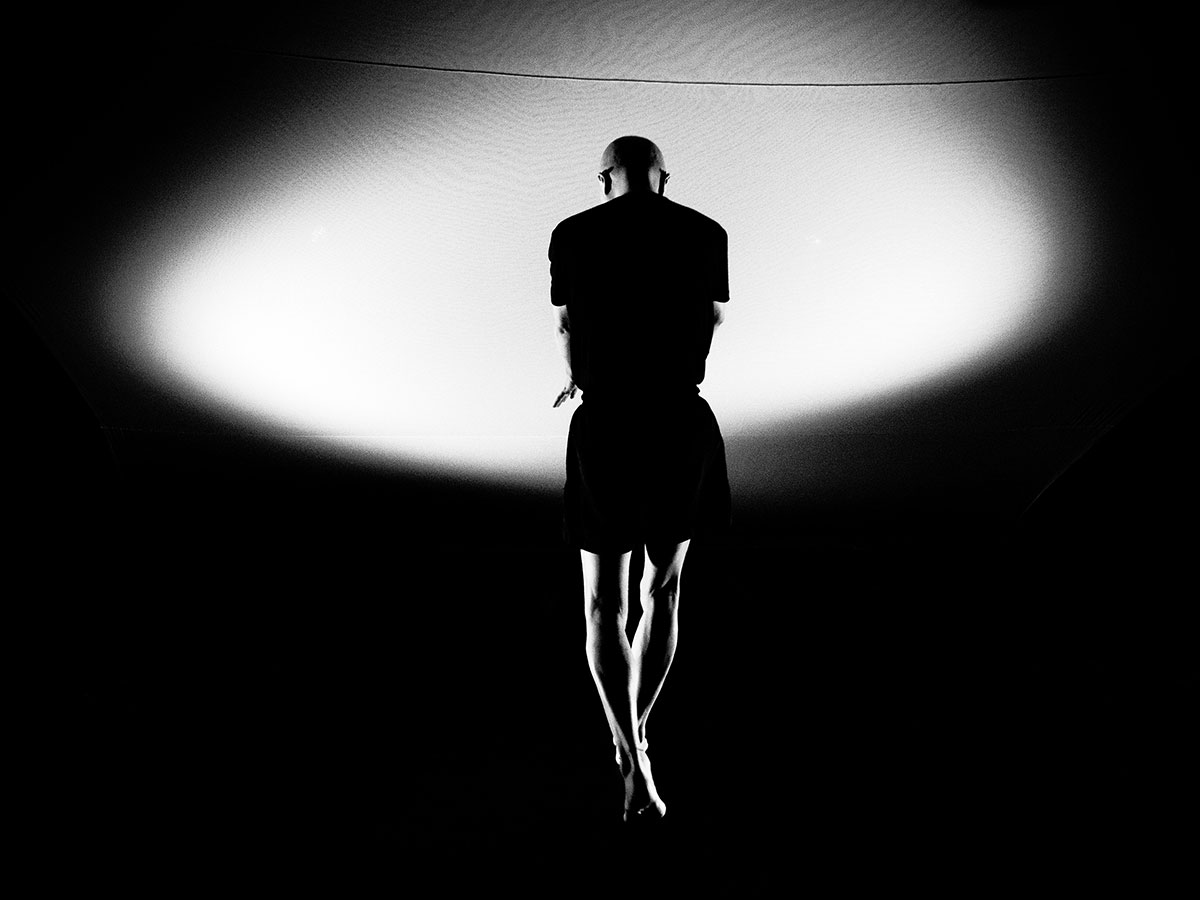LIU Shou-Yuo + ET@T + Body Phase Studio

Archive or Alive: Digital Archiving Development of a Solo Dance by Shou-Yuo Liu
- 2022, Metal materials, nylon rope, fabric, 2 × 2 × 1 m.
- Courtesy of Body Phase Studio.
- Cinematographer:許斌
Curatorial Perspective
Liu Shou-Yuo has been involved in the theater since the late 80s. In 2014, he was invited by Body Phase Studio to choreograph, direct, and perform his then all-new solo dance work, Shapde 5.5 – Shou-Yuo Liu, Solo Dance, within and through which he encapsulated a timeframe of 30 years of theater training to inquire into the meaning of his own existence. The 360VR – Archive or Alive: Digital Archiving Development of a Solo Dance by Shou-Yuo Liu of 2018, which was produced at ET@T is an attempt to use digital archiving technology to preserve and give the artist’s solo dance a different form of viewing and meaning. For this exhibition at the National Taiwan Museum of Fine Arts, Liu designs an “exploded view” video installation based on the “reproduction of archives.” The solo dance material (stage model) and audiovisual material (original theater performance video, VR, behind-the-scenes footage) of Shapde 5.5 are reassembled from archives and re-presented in the real world. On the one hand, the artist challenges how archives preserve the live scenes; and on the other hand, he also questions about how these “live scenes” can be perceived. Furthermore, the archive project also encourages reflection on the relationship among the integrity of documentation, the materiality of a work (including scenes and props), and three-dimensional films. Especially, from the perspective of specific documentation, the evolution of technical conditions in different times engenders the possibility of transforming documentation into a new work. Hence, “the resurrection of a work.” From the viewpoint of the performer, that of the VR camera, and the angle of views chosen by the audience, the work’s diverse life unfurls. How does one preserve the performer’s state of “trance” as well as the “sentience” (reality) of his “presence” in VR filming? How does one stay “alive” in the “archiving” enabled by new technology? These documentary viewpoints also constitute a test to the multi-dialectical relation among technology, creation, and research.
Creation Description
From the development of dance moves to the history of dance, “solo dance” has often served as the arranger and basis of dance works. It is the prototype and the crystallization of everything. Liu Shou-Yuo has been involved in the theater since the late 80s. In 2014, he was invited by Body Phase Studio to choreograph, direct, and perform his then all-new solo dance work, which took 15 years to complete, within the encapsulated timeframe of 30 years of theater training for Shapde 5.5 – a Solo Dance Work by Liu Shou-Yuo hoped for by the artist. At that moment, as he performed and recorded his memories, he explored the meaning of his own existence, which is the basic philosophical attitude of a solo dancer. “Collecting” intangible art and preserving “timeless art,” such as Shapde 5.5, while creating possibilities for archives to come alive, were what motivated ET@T to produce the 2018 360VR Archive or Alive: Digital Archiving Development of a Solo Dance by Shou-Yuo Liu. Following the compilation of the audiovisual archives of Taiwan’s small theaters in the 90s, the next step was the processing of interpretive information related to non-verbal content such as “body” and “movement,” during which importance was attached to immersive audiovisual experiences, panoramic views, and future media that was seen as significant for archiving eras. For this exhibition at the National Taiwan Museum of Fine Arts, Liu designed an “exploded view” video installation based on the “reproduction of archives.” The solo dance material (stage model) and audiovisual material (original theater performance video, VR, behind-the-scenes footage) of Shapde 5.5 have been reassembled from archives and re-presented in the real world. This not only challenges how archives are used to preserve live performances, but also leads to the question of how “live performances” are perceived.

